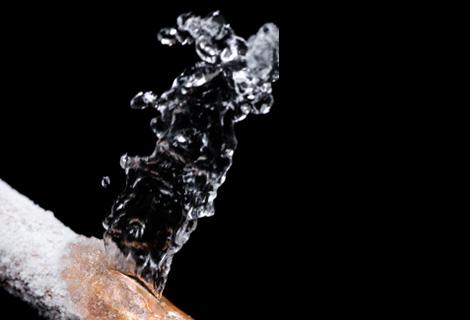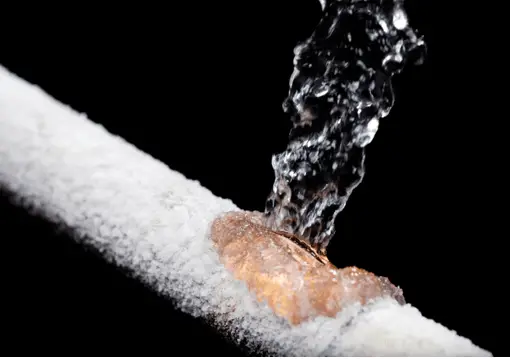What are your opinions about How to Prepare for Your Dishwasher Installation?

A ruptured pipe is a major emergency; you can only stand as you view water you pay a lot to reunite with the earth. In even worse instances, you discover a swimming pool on your kitchen flooring, which is a great trip threat, especially if you have kids around. If the pipeline that ruptured was in your walls, problem: you might need to paint that whole area.
How can a disaster like a ruptured pipeline be avoided as well as taken care of? Well, by listening to your expert emergency plumbers and complying with these rules.
Exactly how do I understand when my pipelines have ruptured?
Rising and fall water stress
Pipes do not simply burst in a day. You may have seen that your kitchen area faucet or shower does not run quickly when you transform the tap. It may stop briefly for a couple of seconds and afterwards blast you with more force than typical.
In other instances, the water may seem typical in the beginning, after that decrease in stress after a couple of secs.
Infected water
Lots of people presume a burst pipe is a one-way electrical outlet. Fairly the contrary. As water flows out of the hole or gash in your plumbing system, pollutants find their way in.
Your water might be infected from the resource, so if you can, inspect if your water storage tank has any kind of issues. Nevertheless, if your alcohol consumption water is provided and purified by the city government, you need to call your plumber immediately if you see or smell anything funny in your water.
Puddles under pipelines as well as sinks
When a pipe bursts, the discharge develops a puddle. It may appear that the pool is expanding in size, and no matter how many times you wipe the puddle, in a couple of mins, there's another one waiting to be cleaned. Often, you may not have the ability to map the puddle to any kind of visible pipes. This is a sign to call a specialist plumber.
Damp walls and water discolorations
Prior to a pipe ruptureds, it will leak, the majority of times. If this consistent leaking goes undetected, the leakage may finish right into a large gouge in your pipeline. One very easy way to prevent this emergency is to watch out for damp wall surfaces ad water discolorations. These water spots will lead you right to the leakage.
Untraceable dripping noises
Pipeline bursts can take place in the most undesirable locations, like within concrete, inside walls, or under sinks. When your home goes silent, you might be able to hear an aggravatingly consistent leaking sound. Even after you have actually inspected your shower head and cooking area faucet, the dripping may proceed.
Precious viewers, the leaking might be coming from a pipeline inside your walls. There isn't much you can do regarding that, other than tell an expert plumber.
Show up the Heat
Establish fans to blow heat right into cold spaces. Keep the garage door shut. If you have reduced water flow, warmth the most prone pipelines (typically in cellars and crawl spaces or near exterior wall surfaces) with a hair dryer. Leave the tap on while you use heat. As you thaw ice, the circulation will enhance. To avoid pipelines from freezing, protect your walls.
Begin Removing the Water
Grab the mop, containers and also a shop vacuum to start to remove the water because you definitely do not desire it soaking into whatever else in your home. And also, a fast tidy up will decrease the opportunities of something obtaining musty.
What do I do when I spot a burst pipe?
Your water meter will certainly remain to run also while your water wastes. To decrease your losses, find the main controls as well as transform the supply off. The water mains are an above-ground framework beside your home.
How to Fix & Detect a Leaking Pipe
How Do I Know if a Pipe is Leaking?
Leak detection tests can help you determine if your pipe has a leak. Even if you don’t see an apparent leak, you should still conduct leak detection tests regularly to save water and money—and prevent major damage to your home.
Water meter. It can be helpful to figure out what your usual water meter usage numbers are and then monitor them regularly. To monitor your meter, first, turn off all water faucets in your home. Check the meter and write down the numbers. In a few hours, check the meter again. If the numbers have changed, you have a leak. Water gauge. Use a water gauge to test your water pressure. Your showerhead should produce a certain amount of water pressure based on its model and design. If the pressure is lower than it is supposed to be for that specific showerhead, your home likely has a leak. Puddles. Look inside your bathroom, laundry, and kitchen sink cabinets. Puddles around the cabinets or around toilets, tubs, showers, and washing machines indicate the presence of a leaking pipe. You may also notice loose tiles, peeling or flaking paint, or mold caused by water accumulation. Napkin test. Even if you don’t see any puddles, you may still have a leak. You can test for water leaks in the bathroom, laundry, and kitchen by wiping below-sink connections with a napkin, paper towel, or piece of toilet paper. If it becomes damp, you probably have a leaking pipe under the sink. Discolored walls. Walls that are discolored—usually with brown or yellow stains—or bulging might mean that they have been impacted by water damage caused by a leaking pipe. Smell. A leaky pipe will create sitting water, and over time, that water may develop a musty smell. If your home smells musty, but you can’t locate the source, it may be due to a leak. Steps for Fixing a Leaking Pipe
A leaky drain can be remedied by tightening the pipe base, replacing the drain seal, caulking the rim, and tightening the pipe nut. Similarly, a leaking toilet pipe can be treated by tightening the packing nut. You may also need to replace the valve. A leaky faucet may just need tightening or replacement of the washers. If that doesn’t work, consider replacing your faucet. If your pipe has a hole in it, you may want to use a pipe leak sealer or pipe leak tape. This quick fix for water pipe leaks can also temporarily fix a copper pipe leak. https://www.ahs.com/home-matters/quick-tips/how-to-tell-if-pipes-are-leaking/

Do you like reading about What to Know Before Installing a Dishwasher? Put feedback further down. We'd be glad to find out your thinking about this write up. We are looking forward that you visit us again later on. Do you know about anybody else who is excited by the niche? Feel free to promote it. I love reading our article about How to install a dishwasher safely.
Navigate plumbing issues professionally.